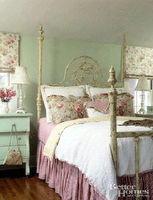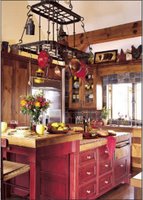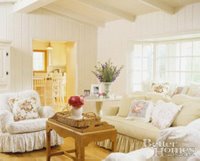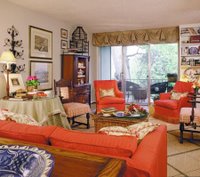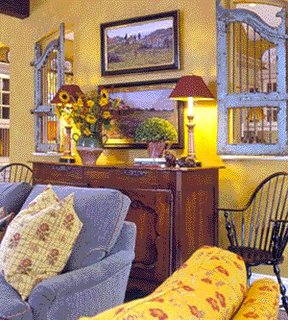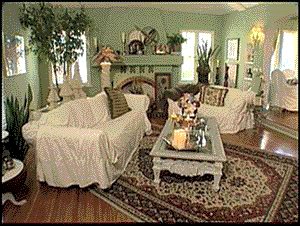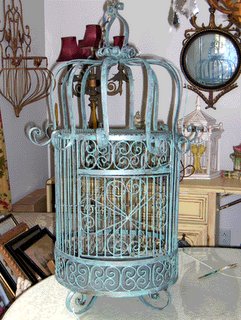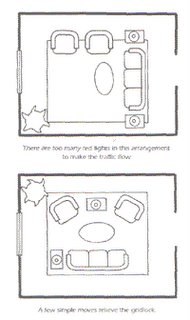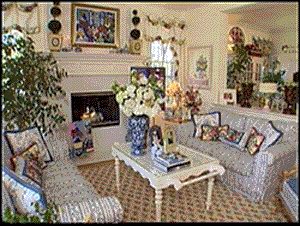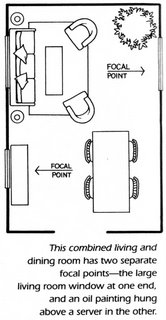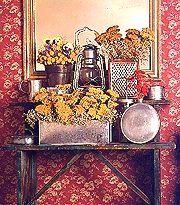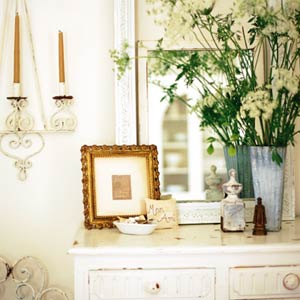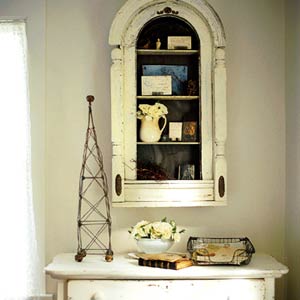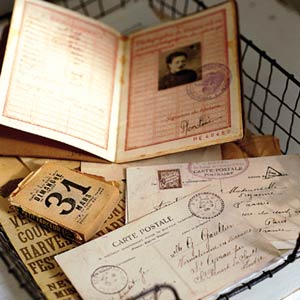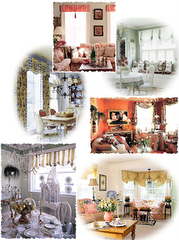Cottage Styles........
Let’s take a look at some cottage rooms from “Better Homes & Gardens” photo library........I’ve added some commentary!

Black & white is a popular color combination. Paint some furniture black, and some white. Find coordinating fabric, at a reasonble price, and you have an elegant cottage porch look.

Campy 50's fabrics are still affordable. Look online for original or reproductions. Paint some furniture classic 50's cottage colors for some fun.

Paint a worn wood floor in diagonal squares. It visually expands a small room’s size. Build a simple cornice to hide curtain hardware and stencil it. Add some French and/or English vintage furniture finds, paiteg in pale shades, and you have viola!......a European shabby, but chic bedroom.

A combination of red & white on a backdrop of black & wood furniture creates a cozy French country cottage dining room. Using two or more coordinating fabrics on upholstered furniture is oh so cottage!
A bedroom awash in yellow-based cream and soft blue upholstery & wallpaper is sure to bring an air of serenity. Wallpaper is once again popular
 after a decade of disregard. Add architectural detail to a plain room by introducing a salvage piece and ornate iron beds and hardware. Throw a grass rug atop your wood or carpeted floors for added texture.
after a decade of disregard. Add architectural detail to a plain room by introducing a salvage piece and ornate iron beds and hardware. Throw a grass rug atop your wood or carpeted floors for added texture.
Mixing and matching different time periods and styles of furniture and accessories is what simple casual cottage is all about. The sideboard server in this picture are two diiferent pieces “married” together. The chairs are French reproductions from the 1950s. The candelabra is European. What brings these diverse elements together? The repetition of soft cream, yellow, and pinkbalanced throughout the room. N otice how accessories are grouped together for impact.
otice how accessories are grouped together for impact.
This is sheer elegant French Country cottage. The walls are washed with ochre & sienna for a warm glow. And, there is nothing more romantic than a four poster bed bedecked with beautiful fabrics. The coordinating toile, check and stripe fabrics pull together a cozy place for sweet dreams.
Why not paint grandmom’s old dining room set a cris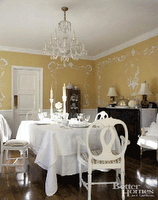 p white and add lovely old table linens for an updated vintage look. Paint the wall above a chair rail a soft color, then use a stencil with joint compound to create a raised architectural feature. The room will look as pretty as a wedding cake!
p white and add lovely old table linens for an updated vintage look. Paint the wall above a chair rail a soft color, then use a stencil with joint compound to create a raised architectural feature. The room will look as pretty as a wedding cake!
A chic, but shabby style room, updated with a color combination of cottage greens and pinks.
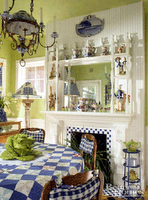
If you love traditional blues in a Victorian cottage room, this is the updated color combination for you. The crisp white painted beadboard and architectural feature above the fireplace awaken old, dark Victorian wood. The granny apple green walls are garden cheerful and brings a complmentary color to accentuate the blues.
Have you collected pictures of some favorite "Cottage Style" rooms for inspiration? Just send them to me at flourishings@hotmail.com and I'll post them here on my BLOG!
